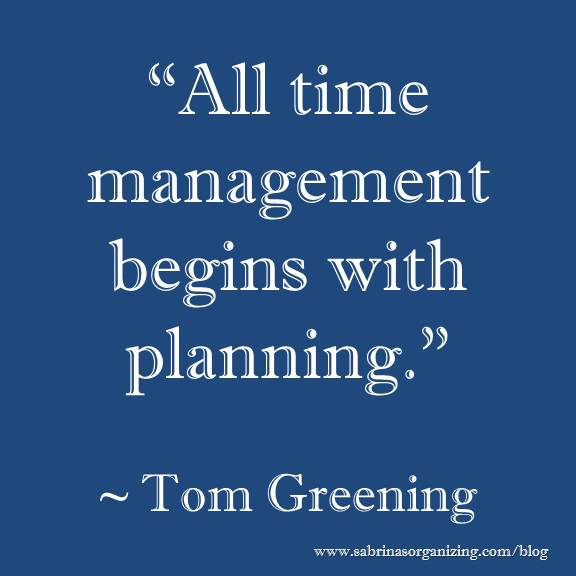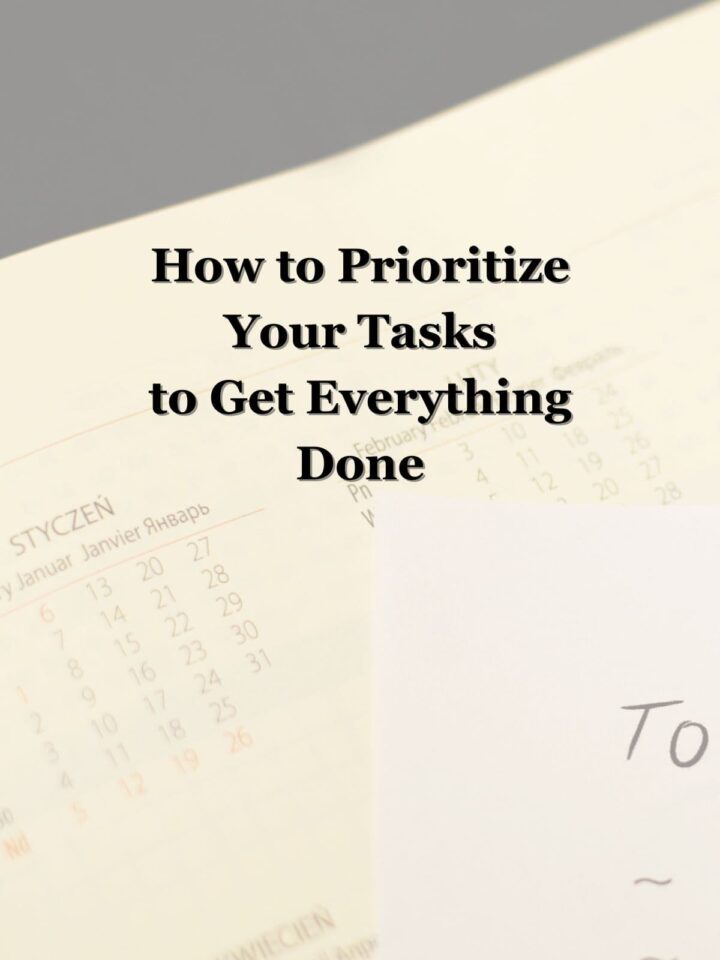You can take several steps to enhance your time management skills. Reducing the number of steps to do a project is just one of them. Another way to improve your time management is to prioritize the tasks that must be completed. But have you ever wondered what the best way to improve time management is? Well, here it is. I believe the most effective way to improve time management is with planning. Today, I will share methods to prioritize your tasks, helping you determine what is best for you, depending on the task.
Jump to:
- Prioritize Your Tasks Method 1: ABCDE Method
- Prioritize Your Tasks Method 2: Mindmap Planning
- Prioritize Your Tasks Method 3: Set Smart Goals
- Prioritize Your Tasks Method 4: Use Chronological Order
- Prioritize Your Tasks Method 5: Eat the Frog method
- Prioritize Your Tasks Method 6: Eisenhower Matrix
- Prioritize Your Tasks Method 7: MIT (Most Important Tasks)
- Prioritize Your Tasks Method 8: Chunking (Time Blocking)
This simple quote (affiliate) says so much. Getting things off your head and on to your tasks list will allow you to get direction and move forward without feeling overwhelmed during the process.

By planning your daily task list, you can determine your priorities and manage tasks more effectively throughout the day or for each project. Planning may seem old-school, but it works. It's simple, with detailed steps refined to motivate you to complete tasks without feeling overwhelmed.
Tasks need to be placed in a particular order to allow for completion in a proper way without overwhelming. Below are some ways to prioritize your tasks.
Prioritize Your Tasks Method 1: ABCDE Method
Get index cards or sticky notes (affiliate) and write one small task on each. Then, add a letter to each task depending on its priority: A-very important or first task, B-next important or second task, etc.
Ask yourself these questions: What needs to be done first? How about the second task? And what is the third task? And so on.
Many apps have the option of adding importance to different tasks. You can also use apps like Trello, Monday, Asana, ToDoist, or Microsoft Planner to create the steps you want to complete a project. While all of these are great for planning your steps for a project, remember that some are more complex than others.
Great buy!

Post-it Super Sticky Notes, 3x3 in, 24 Pads
Buy Now →(affiliate)
Prioritize Your Tasks Method 2: Mindmap Planning
You can also use a large dry-erase or chalkboard and draw a mind map to help determine your tasks. The mind map should include a central circle and a goal written in it. Then, it branches out from the central goal, showing the tasks you need to complete. Each group of similar tasks can quickly be branched into their own branch for easy access and delegation.
There are many mindmap apps; check out this post by Zapier (The Best Mind Mapping Apps for 2023).
Then, number or letter each task by priority order. What do you need to do first, second, third, etc…..
Prioritize Your Tasks Method 3: Set Smart Goals
When prioritizing your tasks, set up smart goals. Here is a recap from my other post: CREATE GOALS AND MAKE THEM HAPPEN THIS YEAR
S - Specific - You need to provide a specific goal. Be as specific as possible. This allows you to see the result in your mind's eye before you achieve the goal.
M - Measurable - A measurable goal allows you to track your progress. You will need to make smaller goals that are included in the larger goal to track your progress.
A - Attainable - Your attainable goals need to be achievable, depending on your situation and your timeframe. The best goal is just out of reach.
R - Relevant - It should be a goal that you can relate to and have a purpose for achieving it.
T - Timely - It needs to be practical, and deadlines must be established.
Organizing your goals and steps this way will give you direction on what should be first, second, etc...
Prioritize Your Tasks Method 4: Use Chronological Order
This method works great for planning your move or planning presentations. Any goal that involves specific, timely tasks that need to be completed before another task begins.
The trick to creating these chronological tasks is to start from the due date or deadline and work backward with your tasks. So, if you are moving on June 30th, you would start writing tasks for that day and the activities you need to do. Below are some examples of functions.
- Settle on the new home.
- That day after the settlement, call utilities and change their names to yours. Be specific and list the utility's name, the phone number or website to visit, and maybe even the order you need to complete.
- Before settlement, contact the moving company to confirm the time and date they are coming.
- Before that day, have the moving company come to the house to pack up.
All these task steps should be as specific as possible. Being straight and to the point will help you avoid overlooked tasks and remind you of what hasn't been done.
Prioritize Your Tasks Method 5: Eat the Frog method
This method is from project management, where you prioritize the tasks by tackling the most complex and time-consuming ones before moving on to the less important or time-sensitive ones. The top-level objectives (OKRs) should always be first. For example, do a presentation that is due on Friday before checking email. Below are some posts I found talking about this method.
Eat the Frog - by Todoist
How to Prioritize Tasks in 4 Steps by Asana
Prioritize Your Tasks Method 6: Eisenhower Matrix
Dwight D. Eisenhower accomplished this easily during World War II. It was also adapted in the Franklin Covey System, which has four quadrants: critical, urgent, important urgent, and neither. This works well for making decisions and tasks quickly. It helps you decide on what to do now (important and urgent), what you need to plan for (important but not urgent), what you may be able to delegate (not essential but urgent), and what you can delete (not necessary and not urgent).
Prioritize Your Tasks Method 7: MIT (Most Important Tasks)
As the name implies, start with your most important task. Since you are doing the most important tasks first, you can determine only a few of these tasks each day. Between one and three key (affiliate) functions that must be completed by the end of the day can be managed effectively and will not overwhelm you.
Look at the tasks that will have the most impact on your life, business, etc. Having a direction will help you make the Done List at the end of the day and see how much you completed.
Prioritize Your Tasks Method 8: Chunking (Time Blocking)
The following task method involves chunking your tasks into groups of similar tasks. You can block time out for these tasks and allow minimal or no distractions. Allocate breaks between your chunks of tasks to relax. You can easily get burned out. Depending on the functions, you can allocate time from 30 minutes to one to two hours.
Check out my time-blocking free printable if you're interested in this method.
What areas do you have issues with when it comes to time management? Please leave a comment below.
How can I help? Do you need help being more accountable with your tasks? If you need guidance on creating a plan to achieve your goals, I can help! Feel free to visit my three virtual organizing consultation options and contact me to discuss your details.
Visit our other time management posts for more help!










Julie Bestry says
I never tired of seeing all of the different research into the approaches to accomplishing one's tasks. For myself, I tend to take a mental, loosey-goosey approach that's a combination of ABCDE and the Eisenhower Matrix, as I usually know, in my head, what my priorities are. However, in rare periods where I'm overwhelmed by multiple major projects with lots of fiddly bits on a deadline, identifying each tasks on paper and being able to turn one's floor (or wall, with sticky notes) into a prioritized chart, and then even moving onward into a Kanban board, really solidifies everything!
In addition, I use time blocking (or chunking, as you call it) on days where I have multiple similar tasks, like on Admin Monday when I'm sharing my own and other blogs on multiple social media platforms. Grouping these tasks together helps make more forward momentum. Thanks for the great review!
Seana Turner says
Reading this reminds me of all the work that has been done on the topic, and the fact that we are all different! I would say chronology works its way into most of my prioritizing. I am highly "future aware," taking note of when things need to be completed. Also relevant in my priority planning is what is important to me. It takes some effort not to fall into the "easy," and maybe extend more effort because I know – in the long run – I will be happier with the result.
Thanks for sharing all these terrific options for helping to figure out this critical aspect of time management.
Linda Samuels says
This is an excellent review of strategies for prioritizing tasks and goals and getting things done. I appreciate your sharing different ways of thinking about and approaching this process. Even if one approach works for you, another one might be more effective for a different project or situation.
While I use a variety of methods, the one I most frequently use is what you refer to as "chunking." I don't call it that and think about it more as time-blocking. I like to focus intensely on one type or category of things at a time, take a break, and then shift to another focused time. It's important for me to get up and move between blocks. Some blocks include "take a walk." Clearing my mind and moving my body helps me feel calm, grounded, and ready to focus again.